 So while on the subject of round ups, I’m going to put my hip boots on and take a giant leap into yet another highly charged political quagmire considered by many horse advocates as “taboo” - because this time, it’s not only about the government, it’s about those who are suppose to be our friends.
So while on the subject of round ups, I’m going to put my hip boots on and take a giant leap into yet another highly charged political quagmire considered by many horse advocates as “taboo” - because this time, it’s not only about the government, it’s about those who are suppose to be our friends.It started at the Wild Horse & Burro Summit held in Las Vegas, NV this past October, where one of the hot topics was the upcoming wild horse gather in the Sand Wash Herd Management Area (HMA) in Colorado.
The Sand Wash wild horses were one of two herds to be the focus of a five year-long fertility control study on PZP by the Humane Society of the United States (HSUS) in partnership with the BLM. The wild horses in Utah’s Cedar Mountain HMA are the others slated for study in this partnership.
It took at least a year and a half to set these studies up and the October 2008 round up was suppose to be one of the “few” Deputy Director Henri Bisson admitted to authorizing removals from - despite no place to put the wild horses or money to feed them once they were captured.
First, let me start with a couple of the highlights within the Summit’s political scene among the advocates themselves that clued me in to the potential controversy brewing about the Sand Wash round up.
It began during the Saturday panel discussion of “Behavioral Effects of Immuno-contraception in Wild Horse Management; The Use of Porcine Zona Pellucida (PZP) on Wild Horses”.
Two of the panelist, Dr. Allen Rutberg, current advisor to HSUS in charge of approving all of BLMs fertility control proposals over the last few years and long-time researcher of PZP (I’ve found records dating back of his extensive involvement since at least 1996) and Ginger Kathrens, The Cloud Foundation’s Executive Director and producer of the documentary series, Cloud: Wild Stallion of the Rockies, began a heated exchange about PZP’s effects on the Pryor Mountain wild horse herds.
Though the fiery exchange was brief, it was unquestionably intense as these two went head to head. Ginger insisted that since applying PZP to the Pryor Mountain mares, she had noted some very unusual effects, such as foals consistently born out of season, mares remaining infertile much longer than they were suppose too, some not reproducing at all and constant fighting among the stallions due to the mares monthly cycles keeping them on “high alert” because the pro-creation drive could never be fulfilled.
Allan expressed obvious frustration as he cut her off time and time again to declare the effects of PZP were well documented and her allegations were completely unsubstantiated. Yet Ginger continued to insist she knew the Pryor Mountain wild horses better than anyone, knew their history, knew their habits both before and after PZP, that its application was really impacting the herds and demanded HSUS do some follow up work and look into what she had found.
While it was obviously disturbing watching these two go at it, I must confess, I became excited as the realization dawned on me that HSUS was going to be intimately involved in the monitoring of the Sand Wash herds on a regular basis. The opportunity to have an independent, scientifically based team on the ground working side by side with BLM, which was also concerned with the humane treatment of the herds, was a rare opportunity indeed!
However, as the Summit progressed, my excited quickly waned for two reasons.
The first was, after Dr. Rutberg’s presentation on “The Application of PZP in Wild Horse Management”, I had an opportunity to ask how long HSUS had been studying the Sand Wash herds and gathering data prior to applying PZP.
Turns out, it was only around March of 2008 the HSUS Team began their work in Sand Wash and even then, based on my current understanding, it was only focused on counting and identifying the wild horse population within the HMA prior to the round up.
So I followed up my initial question with, “How could the effects of PZP be properly evaluated if HSUS had little to no independent information about the herds, their reproduction rates or behavioral patterns prior to the injections?"
Though I don’t remember Dr. Rutberg’s answer specifically, I walked away with the impression this lack of information was deemed “unimportant” to either the study or measuring PZP’s effects and I found both response and attitude a bit unsettling.
The second reason I had been excited was HSUS could provide an independent count of the Sand Wash wild horse population.
According to BLM’s records, as of February 28, 2007, the BLM reported 202 wild horses in the Sand Wash HMA. Yet just one foaling season later, BLM reported the population was now 392, so obviously the increase of 190 wild horses in one year merited further investigation, at least to me. I thought this would be of significant interest to HSUS too, especially since the focus of the study was to be population increases and reproduction rates.
However, my assumption was definitely wrong about HSUS being enthusiastic in pursuing an answer to this question. Instead, it seemed I was a bit of a black sheep for even asking the questions and pointing out the discrepancies in BLMs population reports.
When it came to the Sand Wash wild horses specifically, HSUS couldn’t really say what happened before their arrival in March but they were darn sure about 400 horses had been accounted for with their own eyes. So, as far as they were concerned, this ended the discussion about BLMs funny numbers – at least around me.
So once the Summit was over, I began looking into the Sand Wash HMA, the upcoming gather, the background of HSUS’s involvement, and this is what I have found so far.
*Wild horse removals have been pretty consistent. BLM has removed wild horses in 1995, 1998, 2001, 2005 and now again in 2008. Click Here to see a rather detailed BLM generated article on the 2005 Sand Wash round up. Listening to BLM tell it back then, they seemed pretty sure how many wild horses were out there, both before and after the round up (but then again, aren’t they always?) Apparently, BLM and HSUS seem content to support the idea that somehow, BLM missed approximately 200 wild horses for over a decade.
*Despite ongoing questions about wild horse population numbers, when I recently asked HSUS what the prior reproduction rates of the Sand Wash wild horses were, Heidi Hopkins, now in charge of HSUS’s Fertility Control Program responded by stating she had no immediate information available and suggested I check with BLM.
*According to the 2008 Sand Wash gather proposal, the consistent removals of wild horses also didn’t seem to be helping local ranchers much either as BLM stated, “…actual use by livestock has been substantially less than permitted use (in most cases, up to 60-75% of the AUMs were not utilized). This voluntary non-use began in the late 1990s and continues through the present. The non-use has primarily been a result of the ongoing drought and high numbers of wild horses.”
*Out of the other side of their mouth, BLM then stated, “This document re-affirms the AML based on the monitoring of range and vegetation conditions”, (meaning BLMs established wild horse Allowable Management Level was just fine). If this is true and the AMLs are valid, why are ranchers significantly reducing their livestock grazing to allow for “high numbers of wild horses” for over a decade, even when BLM is removing them every three years to the low end of AML?
As for the results of those vegetation and monitoring conditions that “re-affirmed” the wild horse AML, here is a table of “Actual Wild Horse Use” BLM provided on page 38. Notice anything strange here?
Despite removing 220 wild horses in September 2005, BLM fails to report their numbers ever going down, don’t they? BLM just keeps adding wild horses to the forage consumption chart like nothing every happened. Again, how can BLM "affirm" wild horse AMLs are valid when, according to this chart, wild horses were never removed? I asked BLMs Rangeland Management Specialist Kathy McKinstry to please explain this but I never received a reply.
There were also some things equally as odd in the livestock section. According to BLM, ranchers had been taking voluntary non-use due to drought and high wild horse numbers. Here is the chart BLM published to substantiate this claim. Notice the Animal Unit Months (AUMs) in the Sheeperherder Springs allotment and how they go down in 2006 to merely 41 AUMs. Just a drop in the bucket from what the rancher is authorized to use, right?
There were also some things equally as odd in the livestock section. According to BLM, ranchers had been taking voluntary non-use due to drought and high wild horse numbers. Here is the chart BLM published to substantiate this claim. Notice the Animal Unit Months (AUMs) in the Sheeperherder Springs allotment and how they go down in 2006 to merely 41 AUMs. Just a drop in the bucket from what the rancher is authorized to use, right?
Checking BLMs Grazing Reports for those allotments overlapping the Sand Wash HMA, all livestock is grazed somewhere between September and June every year. Now here is another chart BLM provided in the Sand Wash wild horse removal EA showing “Utilization Levels on Browse & Grasses”. Again, follow the Sheepherder Springs grass utilization levels as reported by BLM from 2005-2007.
When these reports are put together, some rather puzzling questions begin to emerge.
If BLM removed 220 wild horses in September 2005 and reported the utilization levels on the grasses were only 23% prior to the removals while simultaneously reporting the permittee in Sheepherder Springs only used a total of 41 AUMs throughout all of 2006, why did the utilization level on grasses more than double in the Spring of 2006 - six months after the wild horses were removed? Who ate the forage and why did the percentage of grasses consumed continue to decline while wild horse numbers and livestock use continued to increase from that point on?
These were the kinds of questions that I was hoping an “independent humane observer” such as HSUS would be able to address. Except evidence is beginning to suggest HSUS may not be so “humane or independent” after all….
If BLM removed 220 wild horses in September 2005 and reported the utilization levels on the grasses were only 23% prior to the removals while simultaneously reporting the permittee in Sheepherder Springs only used a total of 41 AUMs throughout all of 2006, why did the utilization level on grasses more than double in the Spring of 2006 - six months after the wild horses were removed? Who ate the forage and why did the percentage of grasses consumed continue to decline while wild horse numbers and livestock use continued to increase from that point on?
These were the kinds of questions that I was hoping an “independent humane observer” such as HSUS would be able to address. Except evidence is beginning to suggest HSUS may not be so “humane or independent” after all….
~Links To Related Documents~
BLM National Program Office Colorado Herd Statistics
Fiscal Year 2007
Fiscal Year 2008
2008 Sand Wash Wild Horse Removal Preliminary EA
Livestock Grazing Allotment Reports
Sand Wash Allotment
Sheepherder Springs Allotment
Nipple Rim Allotment
Photo taken from BLMs Internet Adoption website: #7188, captured from the Sand Wash HMA in Colorado, September 2005.
~Opinion Poll Results~
"Should HSUS be concerned with other aspects of BLMs management
in the Wild Horse & Burro Program besides just using PZP
to control their populations?"
VOTES
Yes ~ 13 (92%)
No ~ 1 (7%)




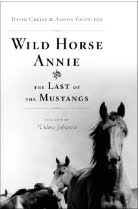



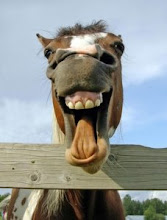




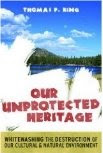



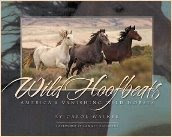




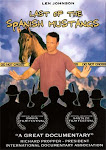





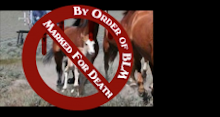
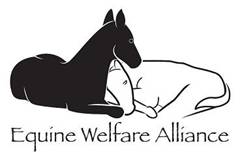
1 comment:
Thanks for the info. Very interesting. I have started to document these horses, I felt there was a need. I know there is some college girl that comes out for the summer and documents them, but I have been unable to find any public information. Now that I have spent some time out there I realize no way could one person know all about this herd. It is 160,000 acres. It would take years to properly put them into their family bands, which I plan on doing. There is a lack of mares and foals from what I've seen...Thanks for the info. I've seen horses mating in January. I sure hope there will be some 2010 foals. This is a real example of managing our herds to extinction! My blog is sandwashwildhorses.blogspot.com.
Post a Comment